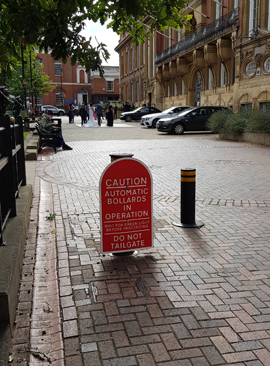Businesses that have embedded agility into their organisational and decision-making structures are proving more adaptable and resilient in the face of Covid-19 and are bouncing back better than their competitors.
For companies to ‘survive and thrive’ during a second wave of Covid-19 they need to urgently learn and apply the principles of agility. That is the conclusion of a study of senior leaders in global businesses, by the management consultancy McKinsey & Company for business resilience organisation Resilience First.
Christopher Handscomb, Partner, London, McKinsey & Company said: “The ongoing hypothesis for our research is that there is a link between agility and resilience. Namely that organisations that are more agile are also more resilient and have a greater ability to adapt to change.”
“Agile organisations combine the efficiency of scale with speed, flexibility and resilience. They do so by combining stable and dynamic elements. Through our work we found that organisations who adopted agile practices during Covid-19 were better able to weather the disruption caused by the pandemic and demonstrated greater resilience.”
Robert Hall, Executive Director of Resilience First, said: “The evidence from our members is that for businesses to survive and thrive and build back better post Covid-19, they need to embed agile organisational and decision-making structures into their business. Bill Gates got it right when he said that success today requires the agility and drive to constantly rethink, reinvigorate, react and re-invent. That is a great definition of resilience in the round.”
“Those businesses that have learnt this lesson during the first wave of Covid-19 are already bouncing back better than their competitors. Those that have not need to urgently learn and apply the principles of agility in order to survive and thrive during the coming second wave.”
Elena Chong, Engagement Manager at McKinsey, said: “Many of the organisations we interviewed had shown great resilience during the pandemic and had done this by taking on practices that aligned well with those typical of agile organisations. In effect Covid-19 had prompted many companies to become more agile and consequently more resilient as a result.”
“Agile organisations set up new structures to enable rapid decision making that allowed them to cut through the usual red tape and laborious decision making pre-pandemic. Agile organisations don’t seek consensus decisions. They take input from all team members, but once a decision is made, they expect all employees to get behind those decisions.”
“Many organisations witnessed performance leaps during the pandemic. For example, a European bank acted on 104 key decisions in a single week when it would normally have taken them four months to do so. The audit teams that followed them did not find a single error in those decisions.”
“Some companies encouraged their operational staff to take on opportunities they saw as a result of the pandemic. Intel empowered staff to work on the ventilator challenge or new designs for PPE. This led to one member of staff obtaining a patent for PPE for hospital staff.”
Hank Cole, Global Head of Business Continuity and Incident Management at HSBC, said: “When you are forced into a situation where at site level, country, regionally and globally you have to invoke both the business continuity plans and incident plans at the same time, that is when you have a true test of your ability to adapt and be agile. The ability to bureaucracy bust out of necessity is really important. So, bringing down the cycle of change from what would normally take months and years. To make those decisions at pace and to make the right decisions needs to become part of the DNA of any company.”
And Brian Stratton, Head of Distribution Capital Delivery, UK Power Networks, said: “Our overhead power lines are built to be resilient but can be affected by severe weather, so we have to be an agile organisation. When such weather occurs, we can see the number of power supplies affected, rise rapidly and by many times the normal daily average. To cope with this the majority of our staff have joint roles. They have a normal day-to-day role and they also have a storm role where they are trained to react in an emergency.”
“There were a lot of rapid decisions we had to make in the first 7 days of lockdown to ensure that we came back stronger than we were before this event. We had resilience plans and had already spent a year investing in the IT to enable many of our office staff to work from home. Aside from our operational engineers out on the road, we went from an office-based model pre-Covid-19 to over 3,500 working from home during the first wave.”
Background
The research was carried out by McKinsey & Company amongst 50 senior leaders from global businesses that are members of Resilience First, a not-for-profit membership group. The initial findings were shared with Resilience First members during a webinar; “Agile lessons from Covid-19 for the ‘next normal”. A full copy of the research findings and recommendations will be published in February.
Photo by Mark Rowe; socially distanced wedding, Leicester city centre.










